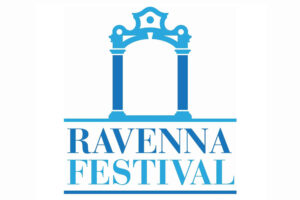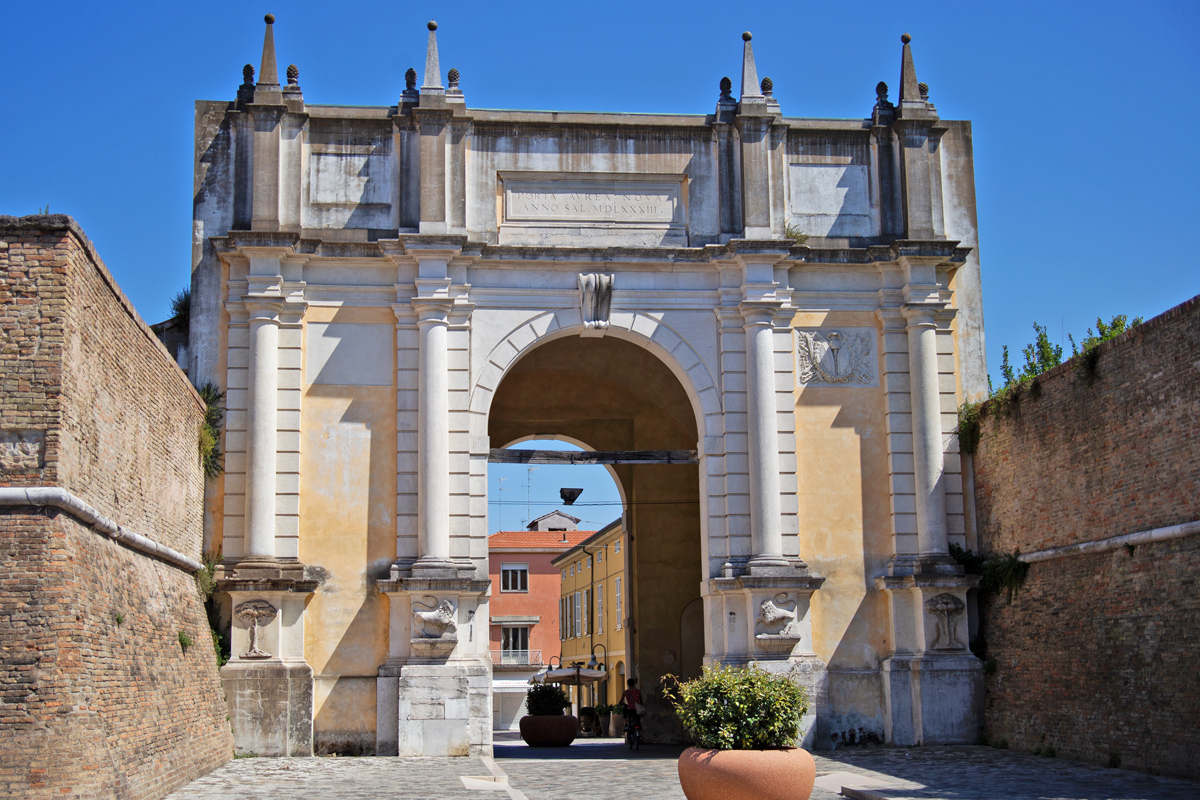PORTA ADRIANA, also known as Porta Aurea Nova (or Porta Cavour by the people of Ravenna), is located very close to the historical centre of the city, between Via Cavour and Via Maggiore.
It was probably built in the 10th century AD on the right bank of the Montone river, a tributary of the Padenna river, when it flowed close to the historical centre.
In 1545, the monumental access to the city was moved and rebuilt for military reasons by cardinal legate Capoferro.
A few decades later (1583), cardinal legate Guido Ferreri redesigned it, adorning it with the marbles and paterae coming from Porta Aurea, built by Emperor Claudius in 42 AD and demolished in the same year. Here is the origin of the name Porta Aurea Nova, which is still visible on the pediment (see focus).
The facade facing the city was further restored in 1615, and in 1700 the two circular columns were replaced by two rectangular towers, which are still present and are 20 metres higher than the gate.
In 1857, when Pope Pius IX visited Ravenna, the gate was enlarged and saw the addition of two columns and an attic, on top of which was placed the statue of the pope, and the enlargement of the trabeation.
Two bas-reliefs representing pine trees, the symbol of the city, were applied to the pedestals of the side columns. The two lions were also restored and two walkways were opened on either side of the archway, between the column bases.
On either side of the gate, it is still possible to see a portion of brick city wall, with a decorative curb built of white and red Veronese limestone. In 1904, all the cornices and side columns were rebuilt in cement and the paterae were removed. Finally, in 1968, the door underwent further extensive restoration.
Next to the gate is a roof garden and a monument in memory of Pier Paolo d’Attorre, a fine intellectual and former mayor of the city, designed by the Chilean artist Mathias Biehler, representing a bench on which an overcoat and a book rest.








